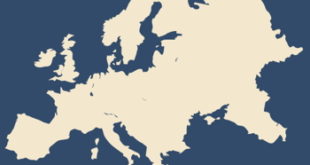European retail channels are seeing ‘excessively high’ inventory levels of notebooks, reports market research firm TrendForce.
Slow inventory clearance efforts have resulted in a lower-than-expected shipment figure, with 38.86 million notebook units shipped globally in Q2, the analyst said.
While this represents growth of 1.1 per cent versus the first quarter, high levels of retail stock could be a problem for the remainder of 2015.
It’s a tough potential blow for the market, which has been enjoying resilient laptop sales this year as desktop and tablets have declined.
“Branded notebook vendors are now under greater pressure due to the weak shipments during this year’s first half,” said TrendForce’s notebook analyst Anita Wang.
“The second half will therefore be the crucial period when vendors will try to make a comeback. They are expecting new notebooks with Windows 10 will help them gain market share in this period.”
Wang also stated the lacklustre shipments in this year’s first half have caused inventories to pile up, with Microsoft’s subsidy program for Windows 10 only covering notebooks sized 14 inches and below.
"New notebook models belonging to the mainstream 15.6-inch size category will have a higher license fee that will hurt their sales in the second half of this year. TrendForce therefore estimates a five per cent slide in the 2015 notebook shipments, down to 168 million units," the analyst said in a statement.
"Display panel makers will also shift some of their notebook panel capacities to producing larger LCD monitor products due to the falling notebook demands. Hence, TrendForce’s 2015 notebook panel shipment estimate has been marked down to 180 million units, a 6.2 per cent year-on-year decline."
Looking back on Q2, HP recovered from its weak first-quarter shipment result and posted a 10.1 per cent growth in Q2, reclaiming the number one position in the notebook market.
Lenovo and Dell took the second and third place respectively, while Apple’s notebook shipments were spurred by the launch of the new 12-inch MacBook Air and upgraded models of the Air and Pro series.
TrendForce said that weak European demand also affected Taiwanese notebook vendors Asus and Acer.
Japanese vendor Toshiba saw a large 29 per cent decline in Q2 because its new notebook products have yet to launch. Samsung continued to take a different notebook marketing strategy, targeting the high-end commercial market with low-volume shipments of high-margin products. Consequently, its notebook shipments kept falling in Q2 with a 40.4 per cent drop.
 PCR Tech and IT retail, distribution and vendor news
PCR Tech and IT retail, distribution and vendor news




